Carmelo Leggio learned early on that orange was the new green. But more than six decades ago, in a little Sicilian citrus grove, the contemporary meaning of green was not part of anyone’s vernacular.
What made orange green back then for young Carmelo was the orange tree.
Clearly, the priority of the trees was fruit production.
“It was a small piece of land,” says Morgana Schlick, Carmelo’s daughter, of the family grove, “but it was enough to sustain a family.”
As the trees’ ability to bear substantial fruit waned, the quality of the wood remained strong.
Down came those trees. In the economically challenged post-World War II years, Carmelo learned that the withered trees could ultimately prove fruitful in other ways.
He learned to “turn” the wood. To the family’s good fortune, Carmelo’s grandfather owned the only band saw in town. The young boy crafted handles for axes, picks, shovels – the tools so necessary for farming and rebuilding war-ravaged structures and infrastructure. The durable orange wood, among the strongest in the species, is said to be viable for a century when adapted to new uses.
And the scrap pieces, left over from the tool handle crafting, were sold by Carmelo to the local bakery to help fire the ovens.
The orange grove proved sustainable for Carmelo’s family in multiple ways – by providing oranges for food, by providing the material to make useful tools, and by providing a resource to fuel a local business.
The young apprentice
By the age of seven, as was traditional in Sicily, Carmelo began apprenticing for a trade, trying out everything from cobbling and blacksmithing to working under a local furniture and casket maker, honing the skills first learned with the orange wood.
But, like many youths, he discovered the need for speed and started working in the motorcycle and auto repair business.
“By the time I was 12, I could have built or rebuilt any motorcycle in Europe,” he says proudly, recalling his skills not just with motorcycles like Vespas, but also with motorized road bikes and the three-wheeled utility vehicles still widely used in parts of southern Europe.
He stayed in that line of work as a motorcycle mechanic in Italy from 1949 through 1972, followed by a stint in a collision shop.
But as time passed and the Sicilian economy weakened, he decided to follow his parents, who had settled in Manhattan in the late 1960s, to America. By 1977, the chance to establish a pizza shop in the Boyertown area arose.
Carmelo jumped at the opportunity, melding his love for his native food and his talents in wood-working and mechanics into the realization of the American Dream.
Being green
And, as he did all this, Carmelo Leggio was indeed being green. Fixing, utilizing, repurposing.
He opened several restaurants under his name – Carmelo’s — in the Coventry and Park City malls and a second in the Boyertown area and ultimately sold them. The original Carmelo’s in Boyertown remains his, but is subleased.
While the restaurant business proved rewarding, Carmelo continued to feel the pull of his youthful training, especially when he began regularly visiting Zern’s Farmers Market and its auctions in Gilbertsville.
“He was always fixing things; he was always very hands on,” says Morgana, who was born in the U.S.
One day in the early 1980s, he was attending an auction at Zern’s. “He decided to bid on a behemoth of an oak piece,” Morgana says. “It was a huge sideboard not in great shape with beveled glass, some of which was broken or missing.”
The family’s reaction to that 1982 purchase was less than enthusiastic.
“We didn’t see the beauty in it, but he did. We called it ‘the junk,’” she says.
That same day, Carmelo bid on a chair in a bag. No, this was not some kind of patented ready-to-assemble piece. This was literally pieces of a Victorian-era chair in a bag.
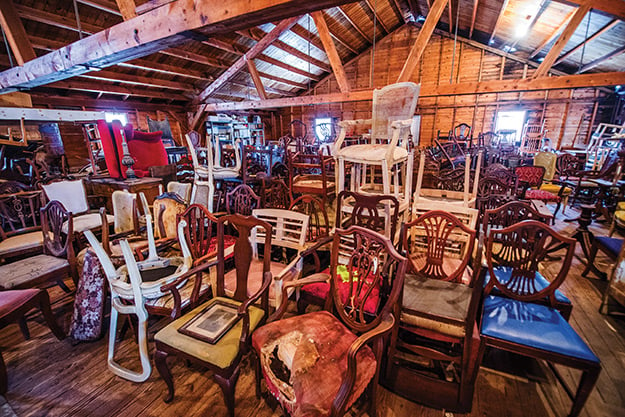
Giving birth by re-birth
Carmelo attacked the two furnishings with fervor. The result: a beautifully restored sideboard and chair, and the birth of a new business: Leggio Antiques.
As Carmelo continued to acquire more and more antiques for his own collection and/or to restore first as a hobby and then for customers, he began to finesse his woodworking skill and to acquire the machines necessary for the work.
Those necessities and the growing collection and demand for his pieces required the family to move from their home in the Rosedale section of Pottstown. Carmelo purchased the renowned Brooke Mansion in Boyertown.
The family and the expanding business cohabitated in the 16,000-square-foot, 42-room Frank Furness-designed home and its two surrounding acres until Carmelo realized even more space was needed. Still, the family looks fondly back on their time in the Brooke Mansion.
And living there got the Leggios involved in the community. In 1992, they opened the Brooke Mansion for a tour with all proceeds benefiting the Birdsboro Library. (Today, the Brooke Mansion is a bed and breakfast.)
From Birdsboro, it was on to Barto. Carmelo purchased 15 acres of land which includes the family home, several out buildings, and a 24,000-square-foot warehouse.
“It allows us to accommodate everyone and also there is room for our containers from Europe,” says Carmelo.
Ties that still bind
Indeed, his ties to his native Italy and the Old World remain strong, from personal and business perspectives.
Carmelo has a colleague who serves as a “picker” in Italy. Sometimes the picker goes to auctions, shops, or estate sales to obtain pieces that are tried-and-true sellers for the company. Other times, the picker seeks items to fill a Leggio customer request.
The company’s customer base is wide and varied. Carmelo counts among them numerous celebrities like Bobby McFerrin (who is never worried – always happy!) and others whose anonymity he protects, NFL players and managers, and executives of local and national corporate giants.
The homes and businesses of these celebrities are near and far flung. Deliveries may be in Berks and Lancaster counties, the home bases, respectively, of Leggio’s warehouse in Barto and expanded space at the Stoudtburg Antique Mall in Adamstown. A number of clients reside in New York City and its metropolitan region. Some are as far away as Washington state, California and Hawaii.
Special deliveries
Morgana’s husband, Frederick Schlick, an advanced chemistry teacher at Reading High School, helps with the deliveries. He recalls the delicate task of lifting heavy antique furnishings up several flights of rickety steps to an apartment in trendy Williamsburg.
“The customer was the daughter of one of our regulars and what she ordered was expensive, but when we placed it in this small apartment, we saw this great furniture sharing space with an exposed water heater in a tiny 800-square-foot apartment that costs more than $2,400 a month to rent,” says Frederick.
Carmelo, who came to New York City in his first years in America, also makes deliveries there. One in particular will always stay in his mind.
It was a beautiful September day and Carmelo left Berks very early to deliver some pieces to Saks Fifth Avenue for a new window display.
“I wanted to drop off the order and get back home for a full day of work,” Carmelo says.
As he waited for a red light to change, he heard a big rumble just after 8. He was almost directly under the Twin Towers.
“I heard the noise, but that part of town was always loud. When vehicles, especially big trucks, traveled over the bumpy streets, you always heard a lot of noise,” he says.
The light changed to green and he moved on. But soon his cell phone rang. He heard the news and looked back to see smoke pouring from the first tower. Rapidly, the city went into lockdown: the bridges and tunnels closed. He made his way to a friend’s coffee shop in Brooklyn where he spent much of the day. Interruptions in phone coverage that day made for some worried hours for his family back in Berks.
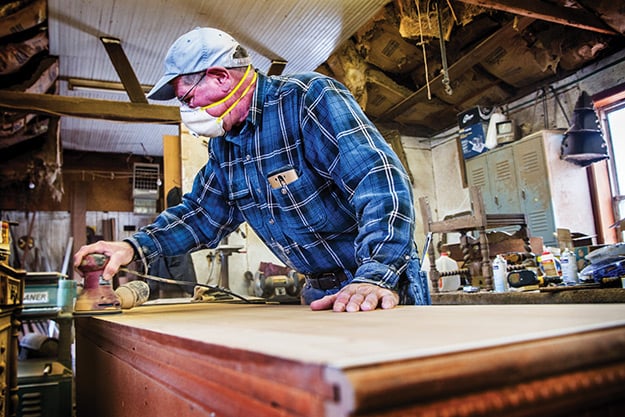
Three decades strong
Still, anecdotes aside, Leggio Antiques, now in its 32nd year, is going strong.
The family remains embedded in the business, even as some work other jobs. Morgana, director of testing at the Hill School, handles sales and design. Frederick, the RHS teacher, handles technology and social media needs. Their daughter, Isabelle, 22, handles e-mails and customer relations.
Morgana noted the importance of the international market for their sales. However, it took a while to recover after 9/11. In the immediate aftermath, all containers were opened and searched item by item. One shipment sustained $20,000 in damages to the goods. Innovation in X-ray technology for container shipments has eased concerns, she says.
Carmelo noted that 80 percent of the antiques he deals with are custom-made, often custom-refurbished, or custom ordered.
Heavily carved, centuries-old European pieces still hold allure, especially for the Boomer generation. In the case of antique beds, which were made very small, they are usually enlarged with the skills of Carmelo’s master craftsmen to accommodate queen- or king-sized mattresses. He remembers recently repurposing a circa-1600s bed.
Remade to last
“This is worth doing. This is real furniture and it will last hundreds of more years,” he says.
Tables are also big sellers. Carmelo buys tables themselves, but also purchases old wood and table legs at various auctions. In this way, he is able to custom create a specially ordered piece. He especially loves large tables and always urges customers to make sure they have lots of extra leaves.
“Young couples become families and then there are grandchildren,” he says. “Everyone needs a seat.”
Carmelo also makes sure the tables are able to endure the stress of hundreds of meals.
“He puts eight coats of lacquer on each piece,” Morgana says, stroking a nearby tabletop. But, to the observer, the lacquer is so clear and fine, it’s nearly invisible.
Morgana explains the firm has seen lots of trends in the past three decades. Early on, heavily carved Victorian pieces were the rage, but with the trend toward open floor plans, the heavy furnishings have lost some appeal.
But, again, the repurposing factors in. In the 1990s, when big televisions were also boxy, customers wanted huge antique armoires repurposed to hide the unattractive TVs. Now, with flat screens that take up much less space, many customers want the armoires repurposed to be, well, armoires.
Another big trend is the repurposing of bureaus, chests, sideboards and buffets as the base for bathroom sinks.
“Boomers still want nice solid pieces that are unique,” says Carmelo, “and these fit their needs.”
Twice is nice
An advantage of being a Leggio customer is being able to “sell back” a Leggio piece. Carmelo and Morgana say that is a common practice as clients’ needs change, especially those downsizing from a large family home to a retirement-friendly smaller house or condo.
Morgana is proud to say Leggio Antiques has built its success on client-to-client references, word of mouth.
The company website, leggioantiques.com, has allowed the family to display its varied inventory to more than just those visiting the Barto warehouse or the Adamstown market space on a Sunday. Increasingly, the world is their market.
And, proudly positioned on the “About” page under Carmelo’s photo and quote, is the picture of a chair.
It’s that aforementioned chair in a bag. Now, it looks like anything but something that was once a collection of pieces. The gorgeous Victorian chair, Carmelo’s first repurposed masterpiece that rocketed his hobby into a successful family business, has a place of honor in both the cyber world and in his home.
“It’s beautiful, right?” he asks. “That’s one piece I’ll never sell.”
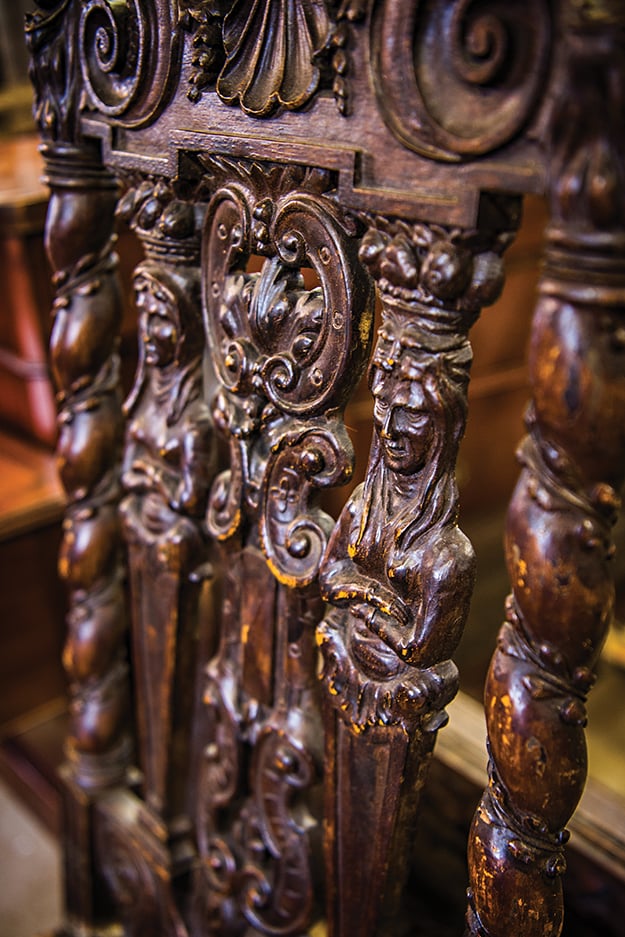
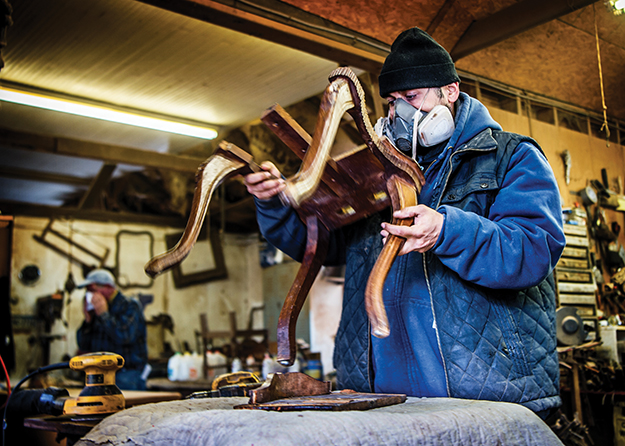
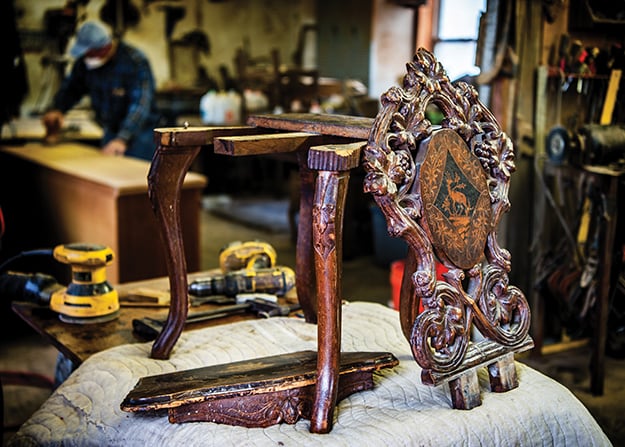
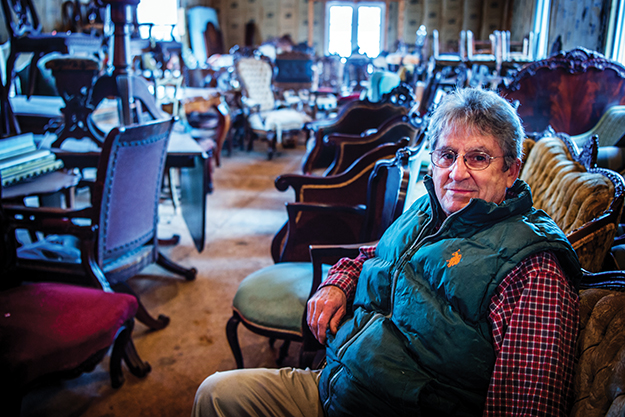
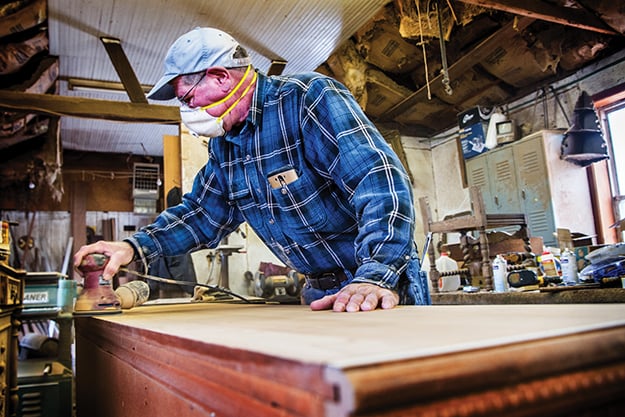
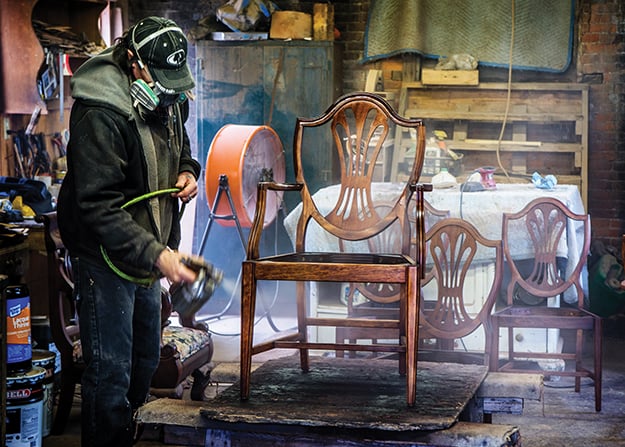
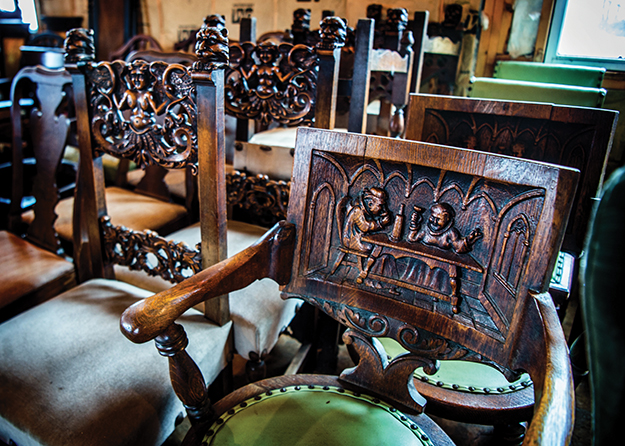
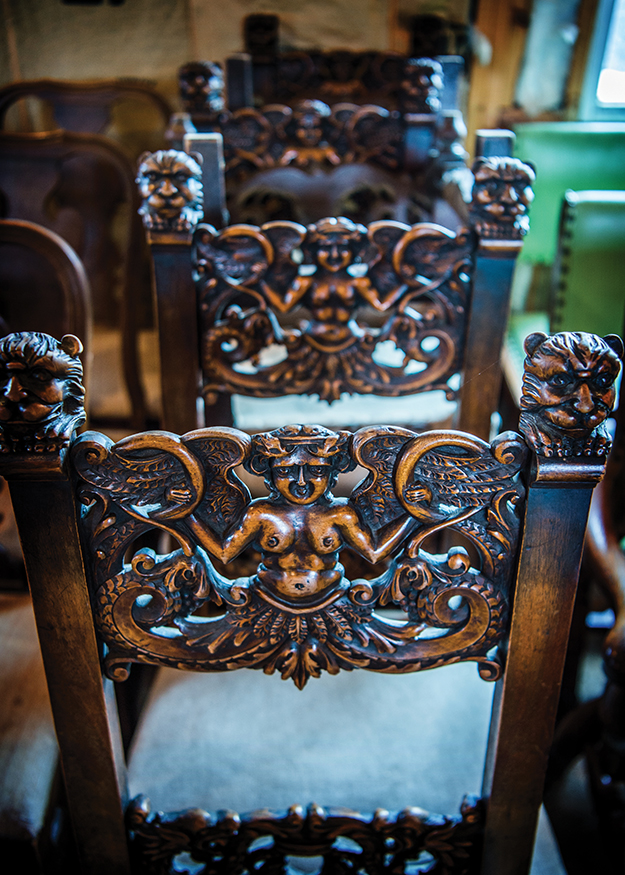
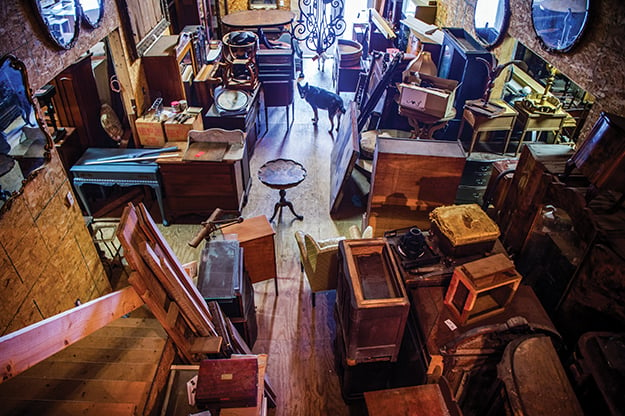
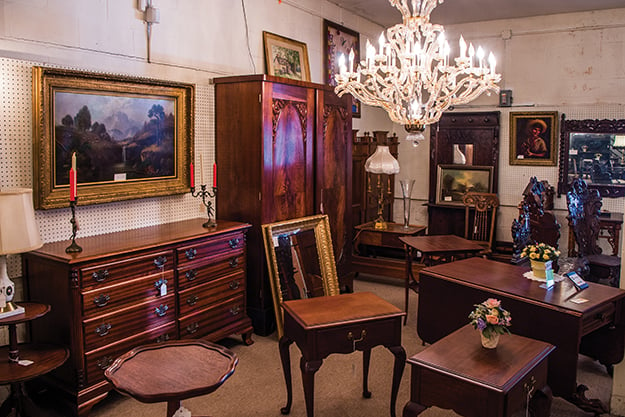
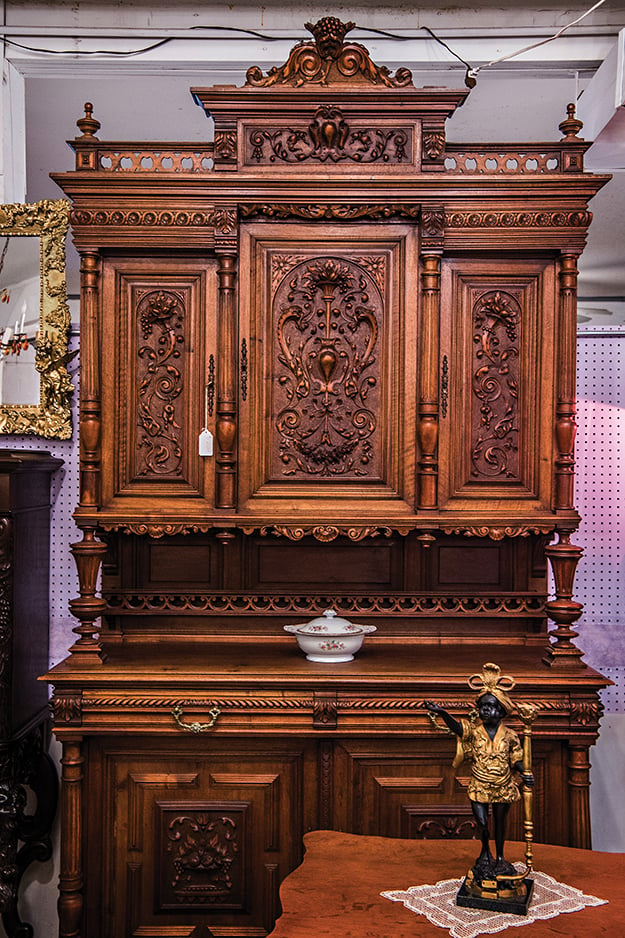
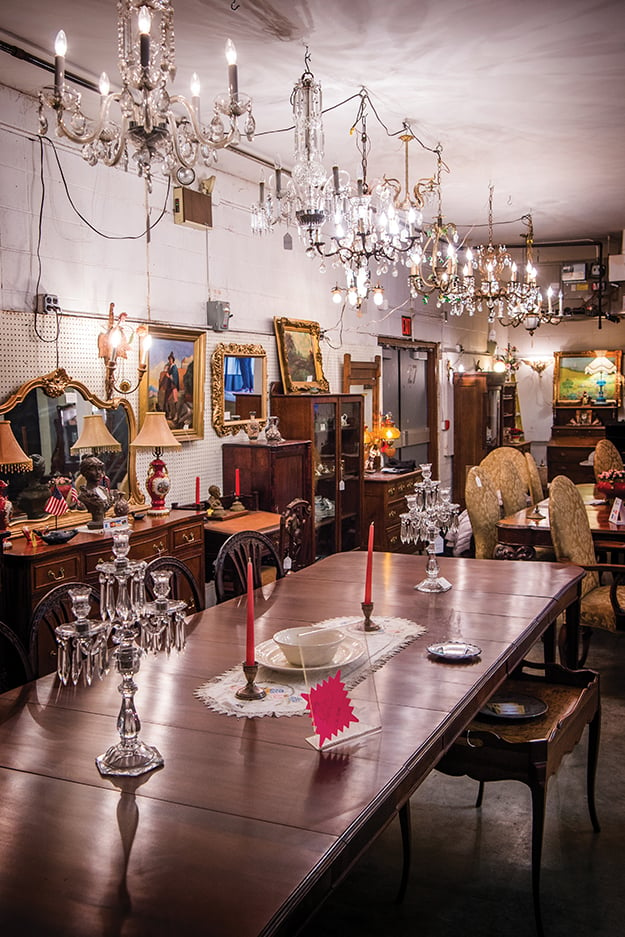
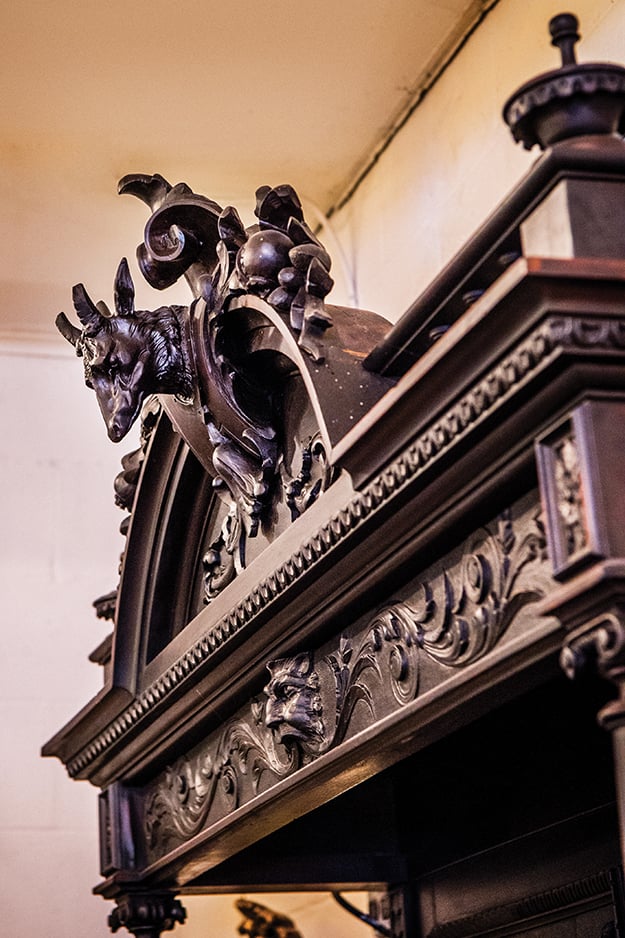
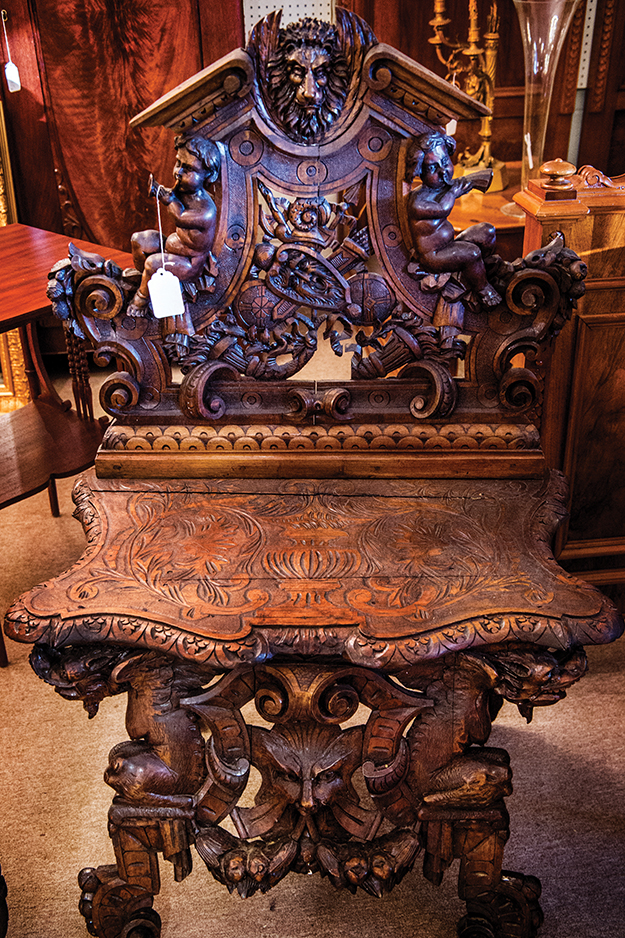
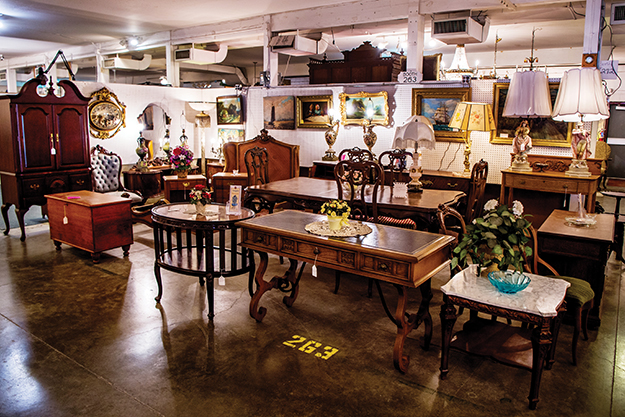
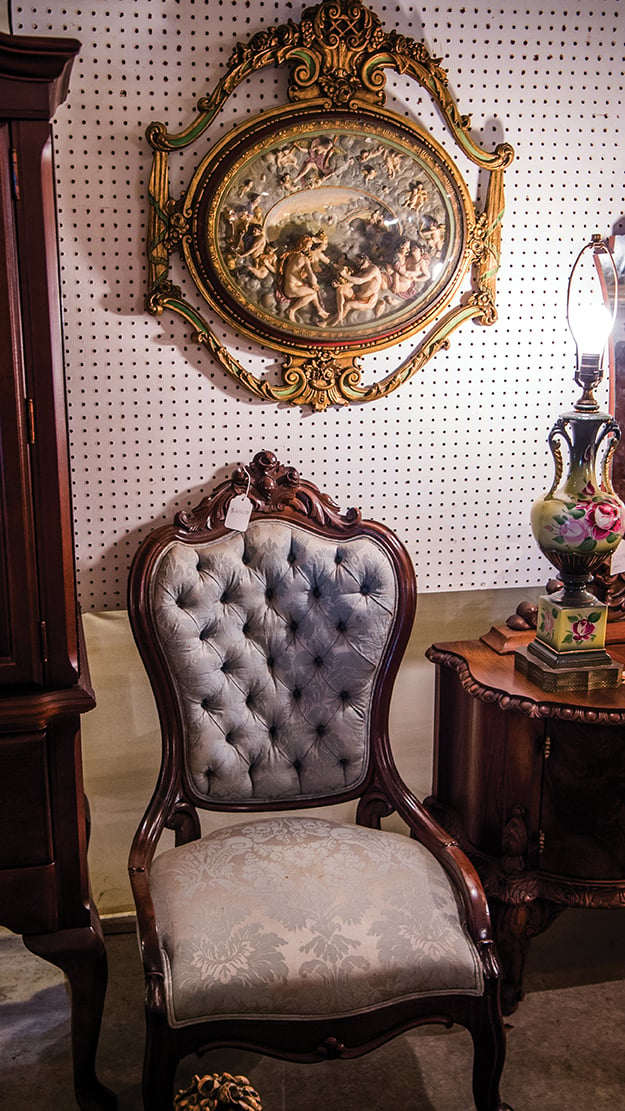
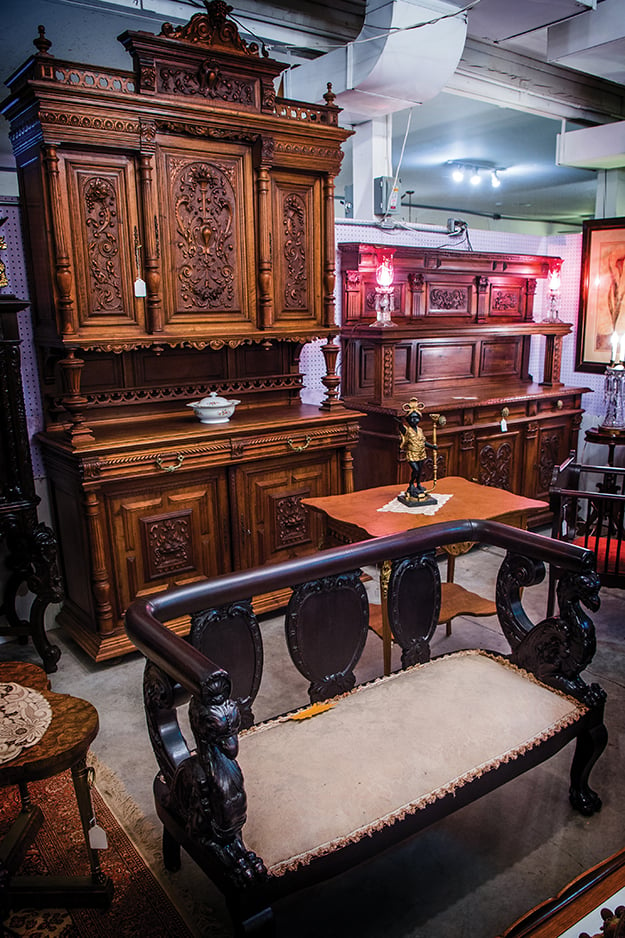
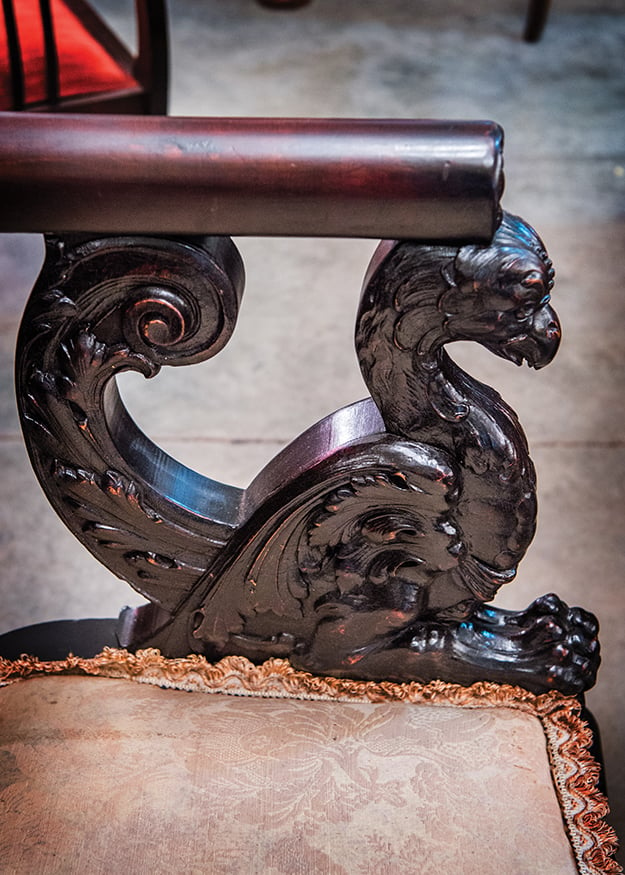
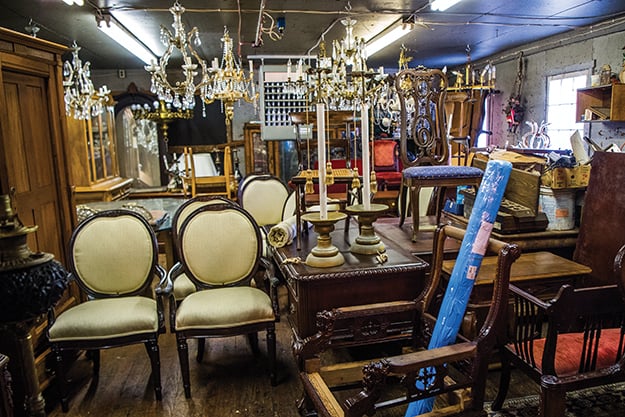
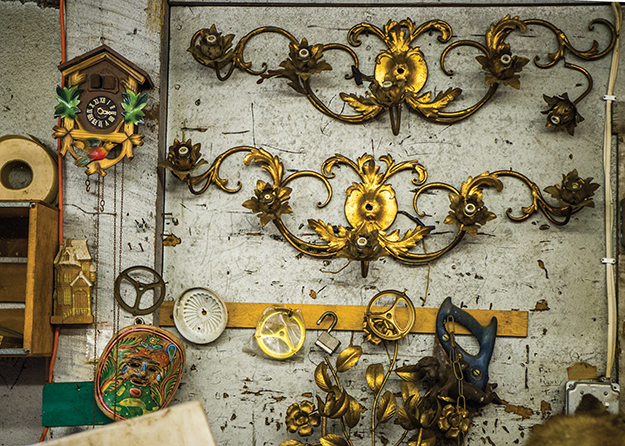
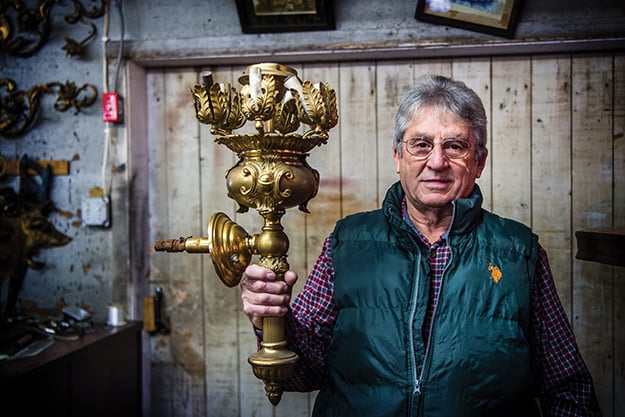
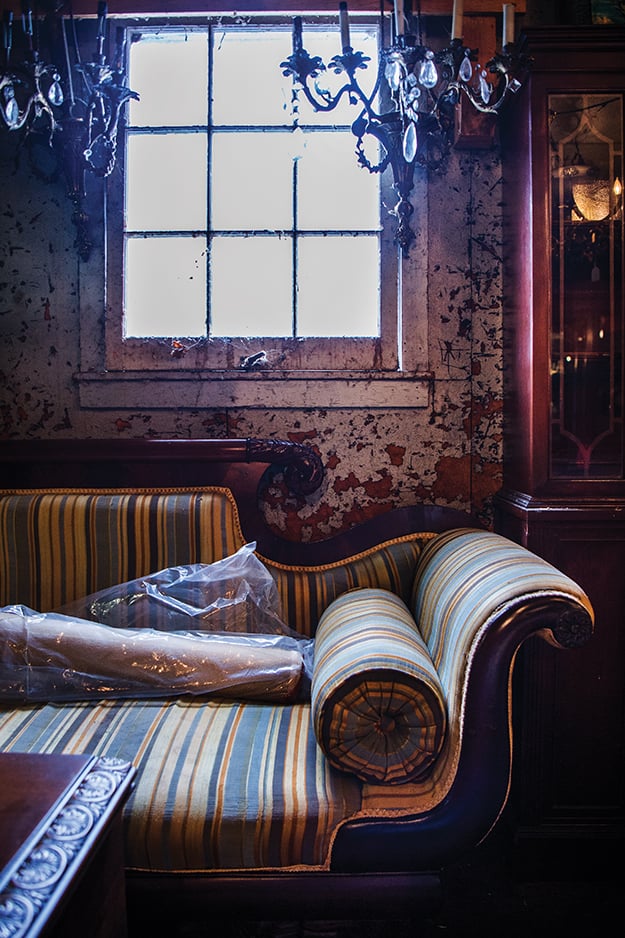
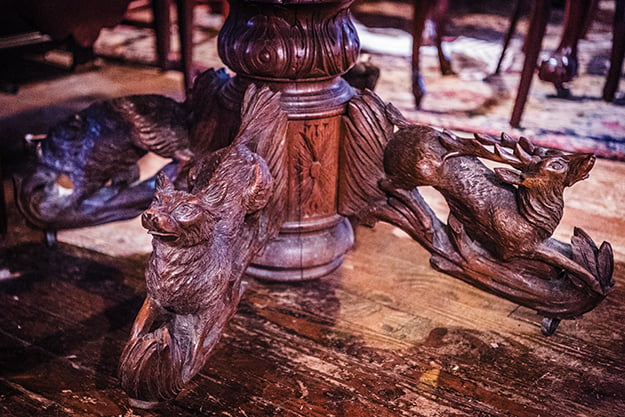
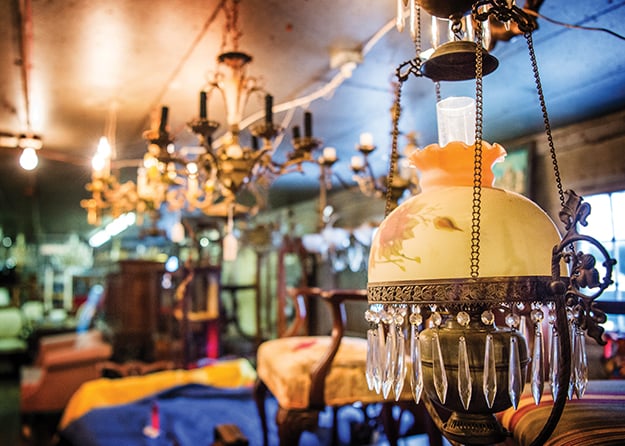
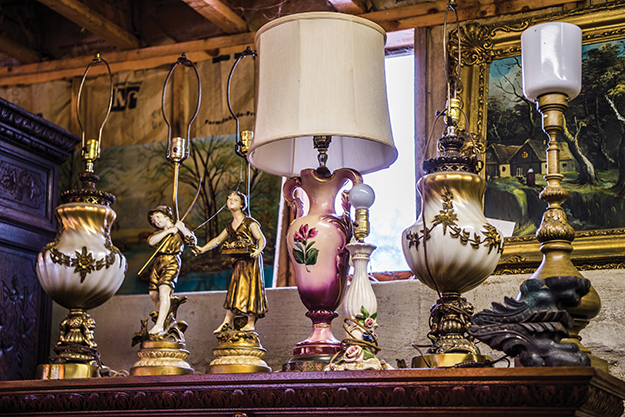
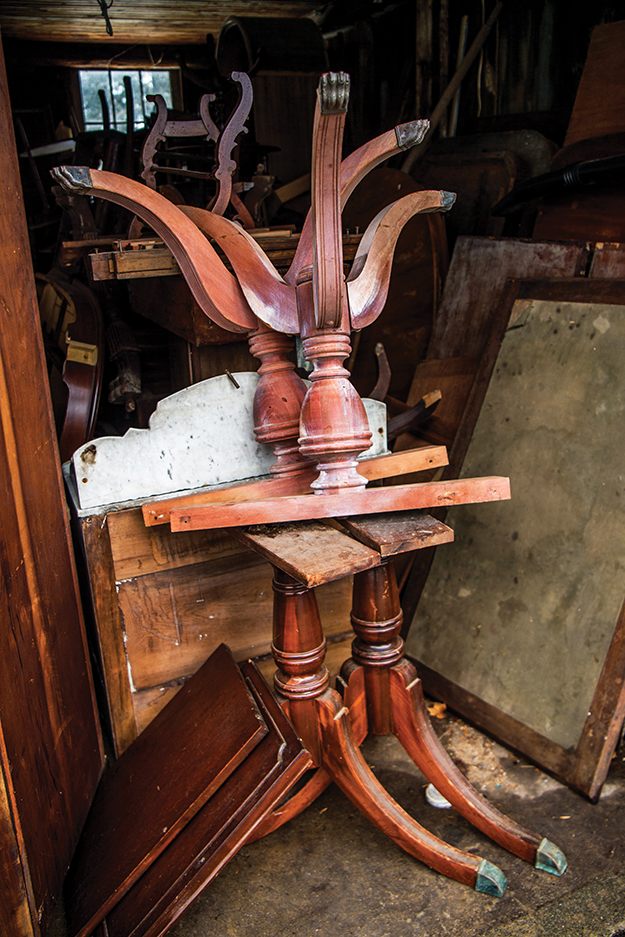
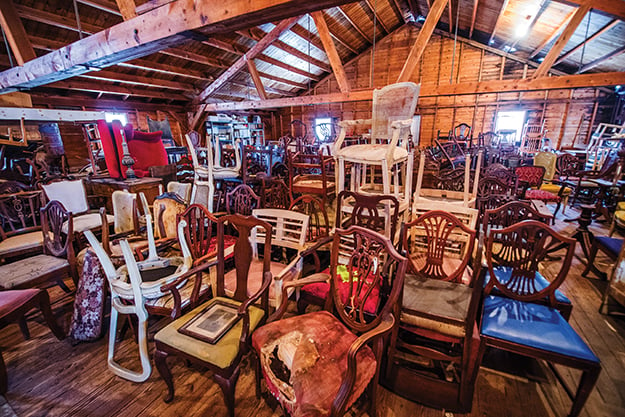
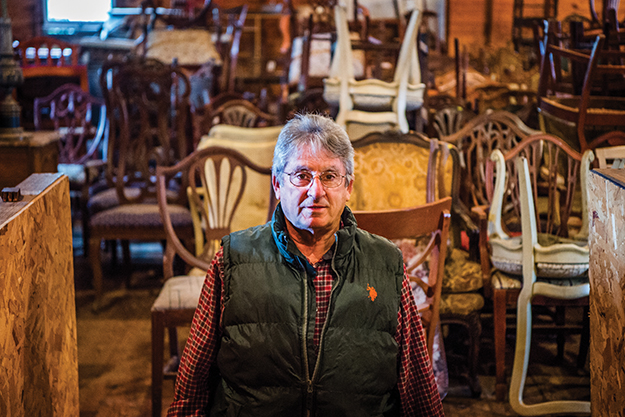
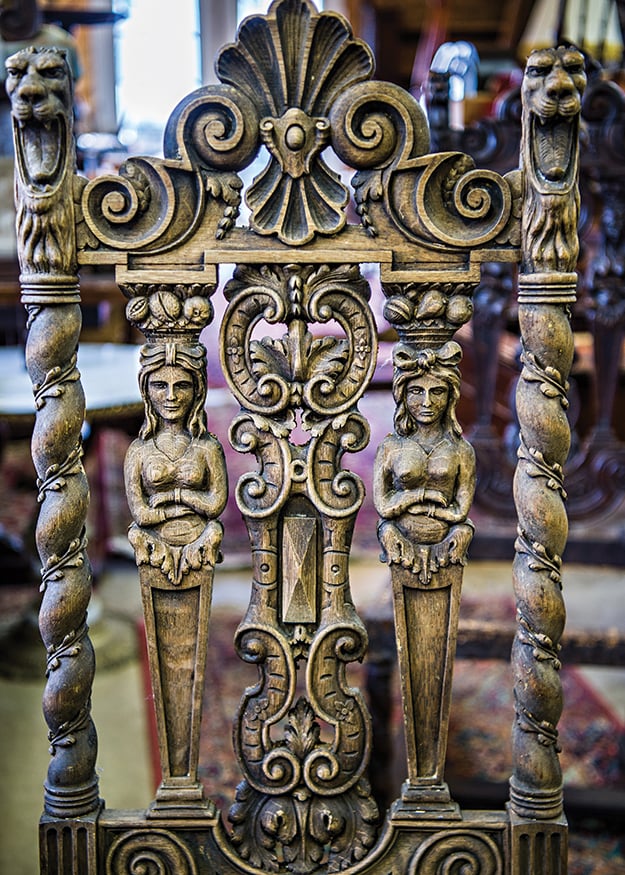
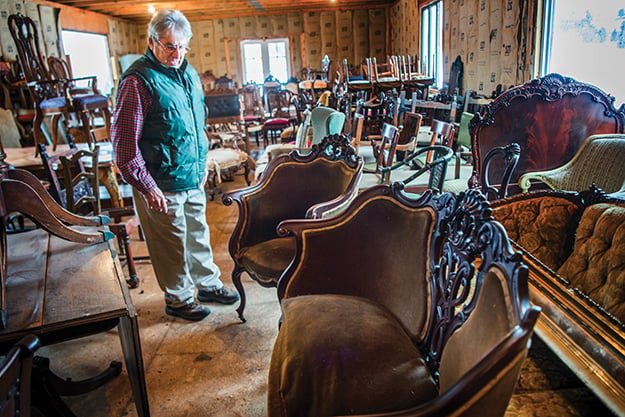
By Donna Reed | Photos by John A. Secoges, Secoges Photographics

















